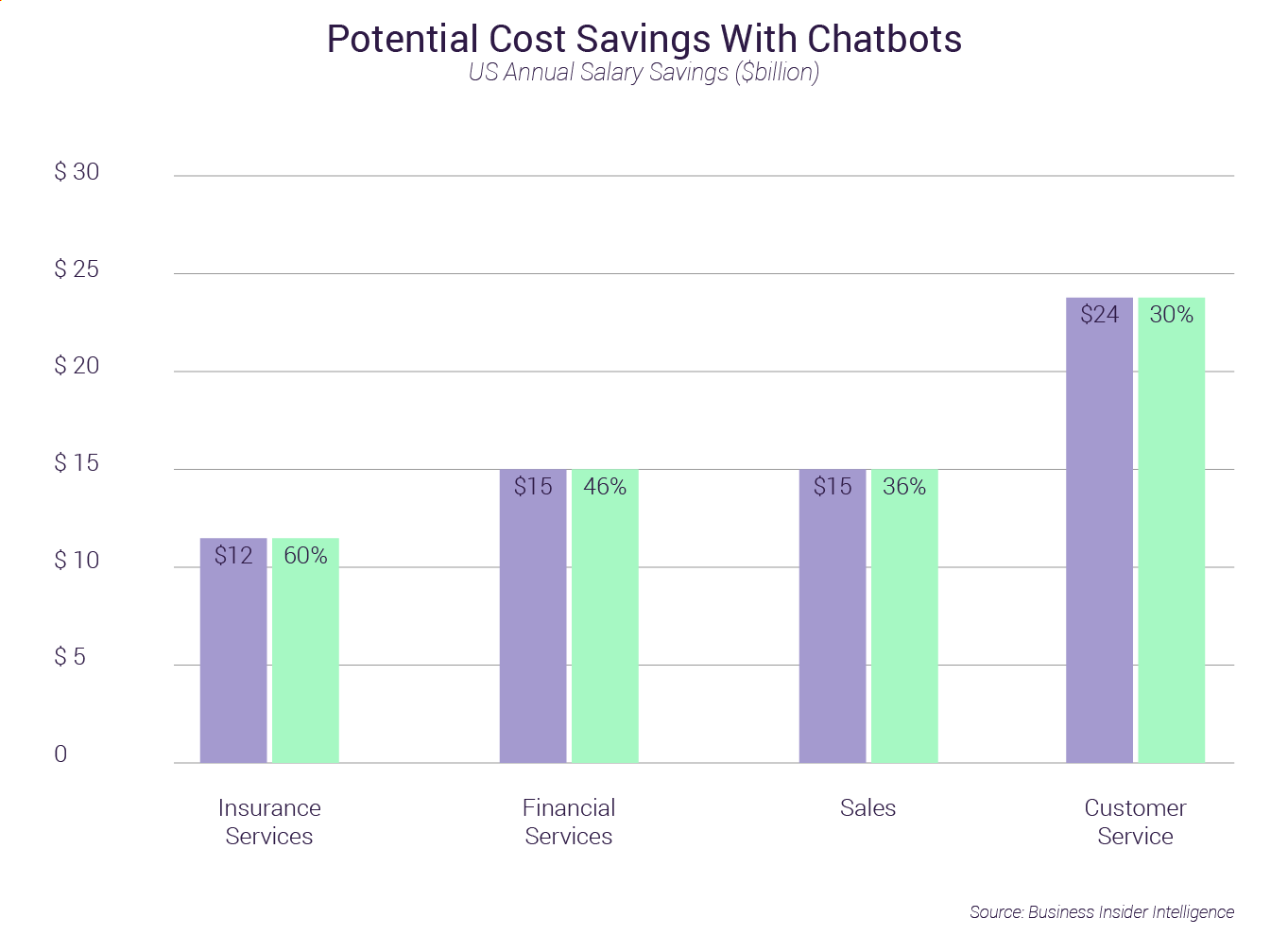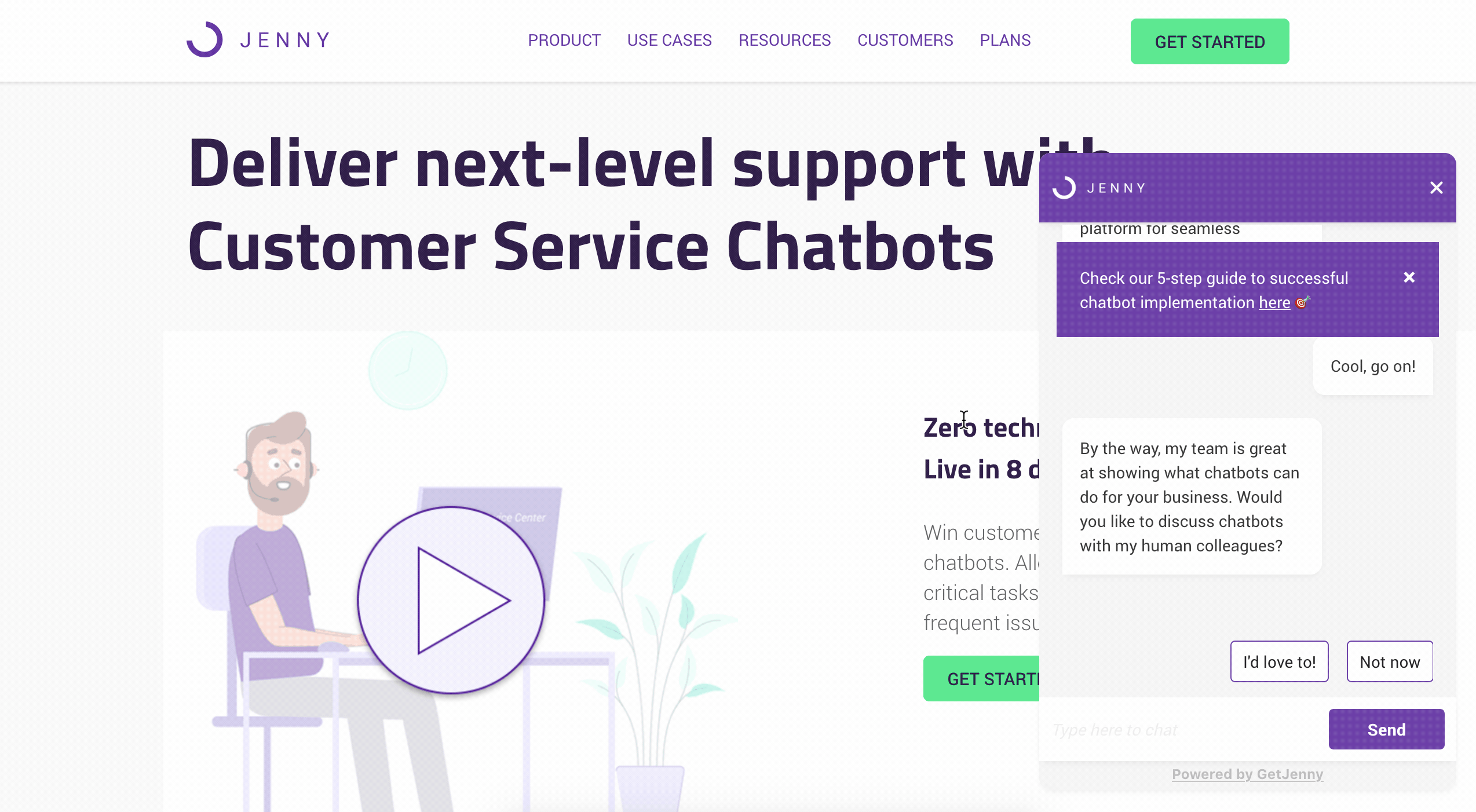by Mikko Rindell
on July 02, 2020
4 Best Ways To Improve Customer Service Strategy with Chatbots
To effectively reach your sales targets and revenue goals, you must retain existing customers. Studies published in Harvard Business Review show that retaining even just 5% more customers can boost a company’s profits by a margin of 25–95%.
The world’s best companies know this. That’s why they invest billions of dollars into providing world-class customer support. They consistently delight their customer base and their customers stick with them longer.
You can achieve similar results if you invest in building a technologically advanced customer support system.
Table of Contents
- How Chatbots Enable World-Class Customer Service
- Four Winning Strategies For Using Your Chatbot
1. Understand The Customer Journey
2. Maintain Customer Engagement
3. Uninterrupted Customer Service 24/7
4. Support For Live Chat
How Chatbots Enable World-Class Customer Service
Today’s markets are hyper-competitive. To stand out, a portfolio of high quality products isn’t enough. You need to differentiate yourself in a crowded marketplace by providing a more satisfactory support experience to your customers.
How? Use a blend of cutting-edge customer-service automation tools like chatbots and expert human support. The reason you need a chatbot in addition to human teams is that today’s customers want customer service on their own terms. This means that they want fast responses, 24/7 availability, and convenience.
AI-enabled chatbots are uniquely suited to fulfill these tough demands by doing the following:
- Allowing customers to have access to instant services with one click.
- Providing service to virtually unlimited numbers of customers.
- Supplying 24/7 service because chatbots never take breaks or time off.
With features like this, you can take advantage of chatbots to provide world-class customer support at an affordable cost. And studies prove this. Chatbots can save companies up to $39 billion a year in salaries across sales and customer support.

Four Winning Strategies For Using Your Chatbot
You won’t magically start retaining more customers by just deploying a chatbot. For positive results, you need a plan. Here are four unique strategies you can use to take full advantage of your chatbot’s capability in order to become a master of customer service.
1. Understand The Customer Journey
To make your chatbot more useful for customers, get to know them in detail. To do so, you need to ask yourself a few humbling (but very important) questions. A few good ones to start with are:
- What are the common problems my customers face with my product/service?
- What issues with my product/service confuses customers the most?
- What are the most common demands, questions, or pieces of information that customers ask my support staff?
Armed with detailed answers to these questions, you can equip your chatbot with answers and solutions your customers will genuinely find helpful. Your chatbot will successfully solve your customers’ problems and remove any obstacles that might stop them from using your product.
But how do you get insights into those problems your customers face? One effective way is to understand your customers’ journey.
What’s a customer journey exactly?
This is the total number of experiences your customers go through — from when they first come in contact with your brand plus the sum of every experience they have interacting with your brand, whether they purchase your product or not. It’s essential to recognize each experience your customer goes through and identify the ways your chatbot can help at each touchpoint. This is referred to as ‘mapping out the customer journey.’
A chatbot can help you do this with ease. It can collect useful insights into where exactly your customers are getting stuck, what information they don’t know, the kind of expectations they have, and their uncertainties about your brand. More importantly, a chatbot can survey your customers and report what information you haven’t given that customers require.
With these insights, you can improve your chatbot with more relevant answers, thus increasing its chances of providing satisfactory service to your customers.
2. Maintain Customer Engagement
How well do you know your customers? Do you know how they talk? What they like and don’t like? What makes them laugh? If you don’t, you should make an effort to understand your customers in this way.
Why?
Because, even though customers appreciate the speed and convenience a chatbot brings, they want it to communicate like a human. Nothing turns a customer off more than an emotionless, characterless tone. After all, no one wants to be identified by their ticket number. If this is how your chatbot talks, your customers won’t want to use it unless they absolutely need to.
Your customers should look forward to using your chatbot, not dread it. You can prevent this from happening. By adding a human touch to your chatbot, you can make it delightful to use.
Here are a few ways how:
- Personalize your chatbot by making sure it asks and addresses your customers by name.
- Add multiple choice questions to your chatbot instead of a single broad, generic question to make your customers feel more understood.
- Write in a human voice. Adjust the tone in which your chatbot talks depending on the kind of audience you are serving.

A chatbot can ask your name and contact details and use it later in the conversation to personalise it to you.
In addition, use your chatbot to collect information on how your customers move through your website or application — and identify what they are interested in most. Since your chatbot can communicate interactively with each customer, use it to gather insights on your customers through chatbot-user conversations as well. This can be personal information like their birthdays or where they work. It can even be sales related information like what product they’re looking for.
But know this — according to Accenture, 66% of customers only share information as long as they get a high quality experience. This means personalizing your chatbot with detailed questions/answers and an engaging voice is necessary because it helps you gather required insights from your customers.
However, these insights aren’t much use if you don’t take action on them. After all, 74% of marketers know that personalization increases customer engagement, yet only 19% of marketers actually use personalization.
3. Uninterrupted Customer Service 24/7
Having a ‘human-only’ customer support team can burden your already limited resources. This is especially true if you want your customers to be able to get customer service round the clock. After all, while humans are able to solve complex problems more successfully, they have a limit as to how many requests they can take and how many hours they work. And yes, hiring additional humans can get expensive fast.
This is where AI enabled chatbots can come in to bring both your company and your customer support team immense value.
By putting a chatbot on your website, you can get your most common and repetitive customer support requests solved automatically. This will also take a heavy load off your human support agents’ shoulders. And for your business, this will result in long-term cost savings and higher customer satisfaction because:
a) Your chatbot will provide fast responses to a majority (around 82%) of your customers.
b) Your human agents will have more time to solve more complicated customer requests.
And this is just the beginning. It's not unusual for GetJenny customers to save 300 hours per month.
By putting a chatbot front-and-center on your website, it can collect deep insights into a customer’s behavior on your website while giving your customer support agents valuable information to help them solve support requests more effectively in the long run. As customers use your chatbot more and you feed it with the acquired knowledge, the chatbot itself will develop and become better at providing customer support.
This way, just like Iron Man has Jarvis, or Sherlock has Dr. Watson, you and your customer support team will have an AI-enabled chatbot, always ready to provide timely assistance and advice when your customer support team needs it.
4. Support For Live Chat
Chatbots with a 100% success rate don’t yet exist. If a complex question or support request comes up, your chatbot may not be able to solve it. This is when you will need one of your human customer support agents to step in.
Use these three helpful precautions to prepare for a scenario like this:
- Make sure your customers don’t fall into an error-loop. If your chatbot is unable to answer a customer support request, make sure it offers alternative support actions. You can do this by making sure the chatbot provides a way for your customers to contact your support department via email, call, or any other channel you deem fit. Or with a live chat integration, bring a human agent into the conversation.
- Put your chatbot in front of as many customers as possible. AI-enabled chatbots can learn from their mistakes and become better at solving customer support requests the more they interact with customers. Put them front-and-center on your website so your customers have the opportunity to use them as much as possible. This will help you identify your chatbot’s weak points quickly. Once you know what should be fixed, teach your chatbot the necessary information so it is successful next time.
- Provide your agents with information from chatbots. If your chatbot cannot solve an issue, ensure your agents have the information customers give in the chatbot conversation. Then they can resolve your customers’ support requests more quickly, without needing to collect the details a second time.
By using these three strategies, customers using GetJenny successfully automated 40% of their support queries within the first month — gradually increasing up to 74% after three months, freeing up their support team to tackle more complex requests and provide better support.
Final Thoughts
Retaining customers can be challenging, but intelligent chatbots make the process a lot easier by giving companies the opportunity to provide fast and effective customer service.
Want to know more about giving your customers the ultimate customer experience with chatbots? Learn effective ways to build trust in your customer service chatbot.
Mikko Rindell
Marketing Director
Similar articles

Chatbot Case Studies for Media and Entertainment Companies
How can media and entertainment companies keep up with customers? Learn how chatbots help service teams stay on track and serve customers better.

4 Things You Need to Know When Considering Chatbots
Ersin walks through the surprising opportunities potential chatbot customers miss in their chatbot project planning.

Must-Have AI Chatbot Features for Better Customer Experience
Are you considering an AI chatbot? This guide helps you ask the right questions to chatbot vendors about chatbot features when you compare options.


